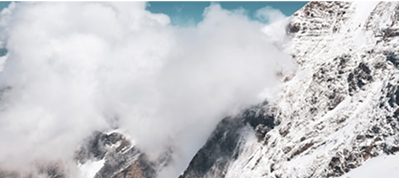Updated 2/2..I have counted 12 surface hoar related slides with at least 3 close calls. Most recent activity 1/31 point L.
Currently avalanches are breaking on buried facets and buried surface hoar. This bullseye diagram shows distribution of ONLY the reported avalanches failing on surface hoar. Seams like the trend is lower elevations with perhaps a northeast component. None of these have occurred in the upper reaches of the cottonwoods where the surface hoar got destroyed by the winds before our large storm cycle. Although possibly not as big of a problem in the upper LCC and BCC, the surrounding areas and lower elevation nooks and crannies in the cottonwoods someone might find a pocket waiting to be triggered
The Uintas seam to be a active area currently. Neil Provo remotely triggered a slide on Sunday 1/29 up near Hoyt Peak. Several more persistent avalanche were noted by Neil in his observation from 1/24 up in the Uintas. The elevations he witnessed these avalanches were a bit higher but were all on northeast aspects between 8000-9500. Craig recently observed well preserved surface hoar with a slab on top of it out in the Uintas as well. These are shown as points F& G on the bullseye. JG's observation from Thursday showed an ECTP13 Q1 and a CT13 Q1 in Weber Canyon shows how reactive this layer can still be and how widespread it is in that region.
Park City is another area that has had a avalanche cycle latily. I counted at least three on Friday although likely only one or two were related to surface hoar and the others were likely triggered on NSF. (One near the eagle lift, another on a east aspect on Iron Mtn, and one just north of the canyons down low above bear hollow drive.) A more recent avalanche posted on 1/29 from the Tolgate neighborhood a few miles from Park City just off I-80 hit my NE, low elevation bullseye trend spot on but the weak layer seams like it has yet to be 100% confirmed. The observer though it might have failed on NSF. Either way its a low elevation avalanche on a NE aspect.
As is the nature of surface hoar these can break out in lower angle slopes below 35 degrees. Since buried surface hoar is a Persistent Weak Layer we should keep a close eye on it as it gets buried deeper in the snowpack as it can create the large deep avalanches that are typically associated with skier triggered slides. With this type of avalanche problem occurring at or below tree line trauma from getting raked through the aspens or pines is a real possibility.







